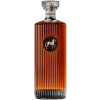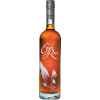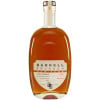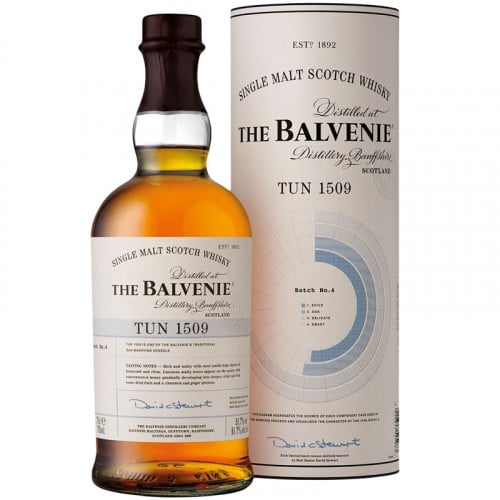The Tun 1509 series from The Balvenie was a popular series that saw the release of 8 batches. Starting in 2014, Tun 1509 was born as a successor to Tun 1401, the first in the Tun range in which the fourth Malt Master David C. Stewart selects some of his favorite rare casks from the oldest warehouses. Stewart received his MBE from Queen Elizabeth II in 2016 for his services to the Scotch Whisky Industry. Tun 1509 Batch #4 had Stewart select 23 casks ― 13 American oak barrels and 10 European oak sherry butts from their most precious stocks. All of these were emptied into Tun 1509 in Warehouse 24, where they remained for several months, letting the aromas and flavors marry, before being bottled at 103.4 proof.
Get your bottle of this exceptional Speyside Scotch today!
About The Balvenie
Born into poverty in December 1839, William Grant became a cattle herder at the age of 7 in order to supplement his family's income. As a teenager, Grant apprenticed as a cobbler and a clerk, and in 1866, he joined Mortlach Distillery as a bookkeeper. For the next two decades, Grant managed the affairs at the distillery, while secretly learning the art of distillation. In 1886, he resigned from his position as distillery manager and bought a field beneath the towering shadows of Balvenie Castle, which he eventually converted into The Balvenie Distillery. Today, The Balvenie Distillery, situated in the Speyside region of Scotland, remains one of the most prestigious independent distilleries in all of Scotland.
The Balvenie Single Malt Whisky is made from fresh, plump barley grown on Balvenie Mains, a 1,000 acre farm situated adjacent to the distillery (the farm has been the distillery's source for barley for over a century). After the barley is harvested, it is malted at the distillery with spring water sourced from the rolling Speyside hills that overlook the distillery. During the malting process, the barley is turned up to four times a day in order to ensure that it germinates evenly (The Balvenie is the only single malt Scotch whisky distillery that continues to grow and malt its own barley).
Once the barley has been malted, it is milled and mashed at the distillery before being fermented using a proprietary strain of yeast. Following fermentation, the wash is distilled twice, first through Balvenie's copper-pot wash still and then again through its copper-pot spirit still. "The most important reason for using a copper still," explains Dennis McBain, Balvenie's coppersmith, "is that it acts as a catalyst. It removes any sulphur which may be carried over from the fermentation process prior to distillation."McBain, who joined Balvenie Distillery in 1959, is one of the oldest coppersmiths remaining in the industry.
In addition, the size and shape of Balvenie's stills — the stills' necks have unique boil balls that are nicknamed "Balvenie Bowls"- results in Balvenie's signature bold and malty flavor profile. "The size and shape of the boil ball allow for the vapors to mix before continuing up the head," explains McBain. "That helps make The Balvenie special."
About Scotch
Scotch is the most popular whisky in the world and is considered the king of them all! There are five whisky regions in Scotland (six if you count the not officially recognized Islands), and each of them produces spirits with unique properties and distinct tasting notes. (The type of grain used determents the type of the scotch.)
Malt whisky is made of malted barley, and grain whisky uses other grains like corn or wheat. Most of the time, a whisky is blended from different distilleries hence the name blended scotch, but if a malt whisky is produced in a single distillery, we get something extraordinary called a single malt.
Check out our impressive selection of scotch whiskies, find your new favorite in the Top 10 scotch whiskies, or explore our treasury of rare & hard to find scotch whiskies.











